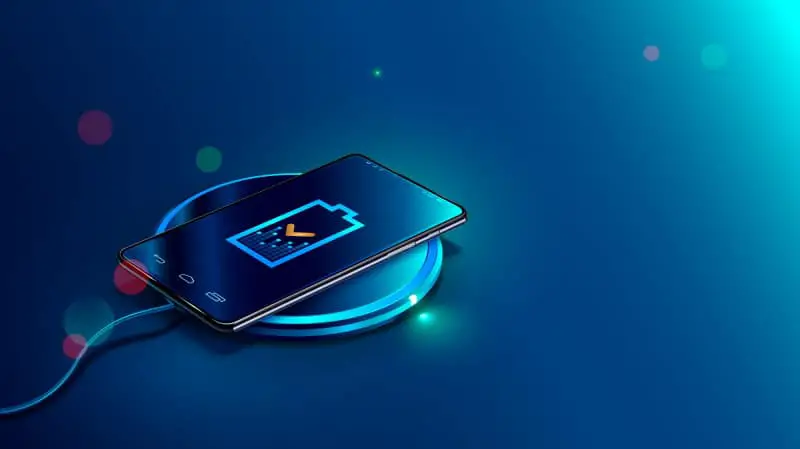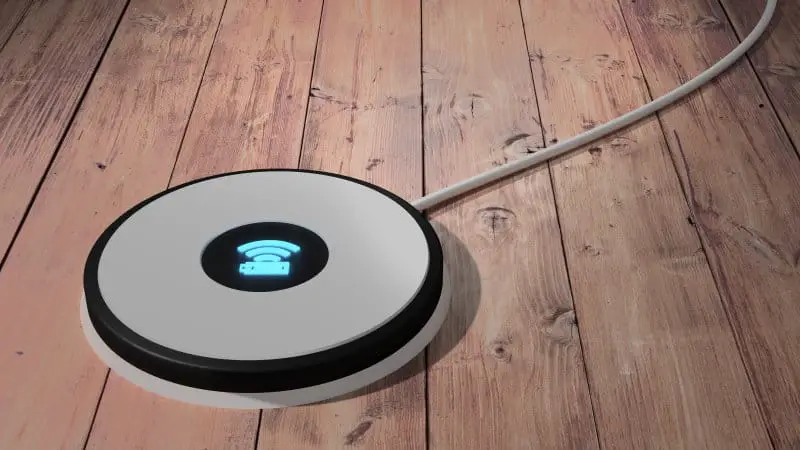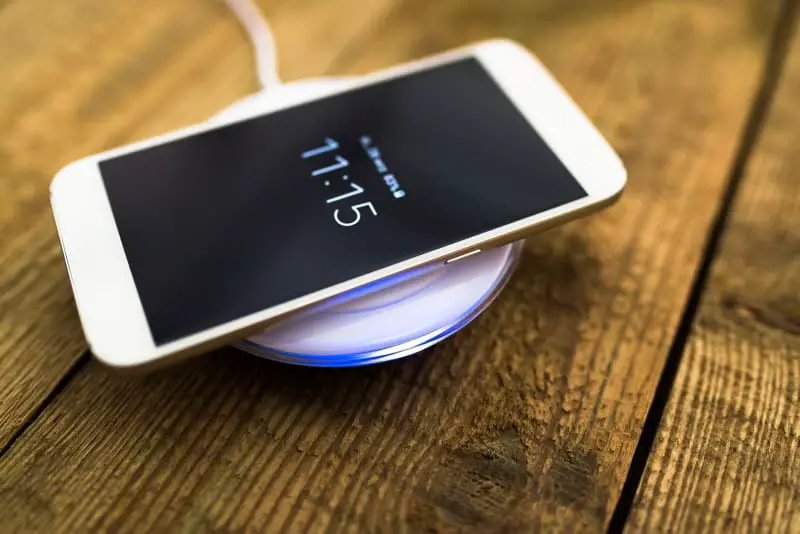Wireless charging has been around for a number of years now. Though Samsung had initially introduced wireless charging for its Galaxy phones, it is now widely adopted by Apple iPhone users as well.
Wireless charging is becoming mainstream in the market due to its convenience. You no longer have to worry about fumbling around with cables whenever you want to charge your phone. Fewer cables around your home or office mean less clutter.
With more people switching to wireless chargers from traditional charging systems, there are concerns about wireless charging being bad for your phone. So, is wireless charging safe for your phone?
Yes, wireless charging is safe for your phone. The heat generated by the wireless charger doesn’t affect the phone’s battery life. Wireless charging creates a safe charging environment for your smartphone.
The current wireless chargers have adopted Qi specification which uses an inductive charging technology. Wireless charging provides a stable charging current to the phone compared to the traditional wired charging system.
Instead of connecting your phone to a wall socket, the wireless charger uses resonant inductive coupling. In this case, the transmitter coil (of the wireless charging pad) and a receiver coil (in your phone) establish an electronic connection between the two devices.
After the connection, the two coils convert and transmit the electric current to fill up your phone’s battery.
Wireless chargers are very easy to use, you only need to place your phone on the wireless charger pad surface and the phone will start charging immediately.
The current used in a wireless charger is usually 1 coulomb per second, which is equivalent to 1 Amp, while a wired charging system uses 1.6 Amp or 1.6 coulombs per second. Therefore, the wireless charging uses a lower current than the wired charging device.
The wireless charging device also has separate coils (transmitter and receiver in different devices) and a plastic material between them. This makes your wireless charging safer and creates a stable charging environment for your phone.
Can The Heat Generated By Wireless Charging Degrade Battery Life?
As previously explained, a wireless charging unit uses a lower amount of current in order to charge your battery. Probably you’re wondering whether the heat generated will damage your battery. Don’t worry, the heat generated by the charging device doesn’t directly affect your cell phone battery.

Your phone’s back cover acts as a semiconductor. It generates heat when current flows through it.
The lithium used to make the phone’s battery is not a semiconductor. Therefore, there is no electricity passing through the battery, hence no heat generated by the battery.
The battery is also capable of protecting itself from the heat generated from other semiconductor parts of the phone.
When charging your phone, you may have noticed that the phone gets really hot. In most cases, the current flowing through the semiconductor parts is what is making your smartphone too hot. This heat doesn’t have any side effects on your battery.
Your phone system is designed such that it can manage the heat generated during the charging process. If the system gets too hot, the phone will stop the charging process and allow the phone to cool down.
This is because the phone’s lithium-ion battery has a Protection Circuit Module (PCM) built into its circuit board in order to protect your battery. For example, the PCM continuously monitors the battery status and ensures the battery doesn’t operate outside the set operating standards or limits.
The PCM calculates any secondary data and sends it to the motherboard. The data is used in controlling the charging environment of the battery.
What Causes Degradation Of Battery Lifespan?
Cell phone batteries do have a finite life and they will eventually start to degrade. Unfortunately, your phone’s battery can degrade if you charge the battery incorrectly.
Wireless charging doesn’t degrade your phone battery life. Your charging habits, how you use the phone, the battery operating system, and the specifications of the phone model are some of the contributing factors that affect your battery life.
However, there are various measures you can take up to help you prolong the battery life. Some of these measures are discussed below.
Deep Discharge The Phone’s Battery
Discharging your battery to almost zero every once in a while can help refresh the battery operating system to its full life cycle. This way the operating system will know the actual battery capacity over time.
You should also note that the phone’s battery has a limited lifespan or cycle count and every time you drain the battery, you use at least one cycle. Draining the battery more often will reduce the battery lifespan.
Fast Charging The Phone
Smartphones are designed such that they stop charging when the battery is full. Research done by the US Department of Energy indicates that charging the battery at higher voltage will lead to ion path irregularities, and this may affect the battery in time.
If you often use fast charging for your battery, it will increase the corrosion rate of the lithium-ion battery. For this reason, you should only use fast charging when necessary. Your battery is more effective when charged and discharged at a lower speed. A high-voltage charge can make the battery lose its ability to hold the charge, thus it drains very fast.
Overheating Of The Battery
The batteries are designed to operate safely and if too much heat is generated, the charging process will stop.
Subjecting the battery to high temperatures (above 400 C) will significantly affect the battery. Therefore, keep your phone away from direct sunlight. Similarly, keep the phone away from extreme freezing temperatures.
In these cases, overheating is caused by the heat of weather conditions and not the heat produced during wireless charging.
How Wireless Charging Works

Wireless chargers use electromagnetic inductive charging technology. The charging process takes place in three ways:
- The wireless charging pad uses tightly-coupled electromagnetic inductive charging or non-radiative charging.
- Using a charging bowl or surface type charger with a loosely-coupled electromagnetic resonant charger or radiative elements that transmit power for a few centimeters.
- Using uncoupled RF wireless charging to transmit power a distance of a few meters.
Depending on any of the three processes, a copper coil on the transmitter (charging station) creates an oscillating magnetic field leading to generation of current on the receiver antenna. When the receiver coil comes closer to the surface, it interacts with the magnetic field leading to the creation of an electric current. Using the coil in the charger, it will transfer power from the base to your phone.
The magnetic resonance enables the transmission of power at greater distances as well as increases the current efficiency between the transmitter and the receiver.
Therefore, the wireless charger uses inductive coupling found between the charger and your phone. A test signal is sent by the charging station to your phone to determine how much power is needed to fully charge the phone.
Once the power requirements are determined, then the charging process begins and will continue until the phone is fully charged.
Watch out this video and have a better understanding of how wireless charging works:
The charging device is designed such that you cannot overcharge your phone’s battery. When the battery is full, the battery’s protective circuit module will stop the charging process.
Wireless induction chargers only work within a very short distance of the cell phone. If the charger and the phone are farther apart, the generated fields will lose power.
Is Wireless Charging Safe For You
Wireless charging focuses on electromagnetic resonance and the use of radio frequency in the induction process. The wireless charger emits EMF radiation in the form of electric field, magnetic field, and radio frequency.
Wireless chargers emit high levels of magnetic field radiation and low levels of RF radiation. High-levels of RF radiation are very harmful to your health but the amount of RF radiation emitted by the device is considered to be quite low. Furthermore, the electromagnetic frequency emitted by the chargers is only active when charging the phone.
The current wireless charging pad is fitted with Qi technology to allow the transfer of inductive power to compatible devices. When you measure the magnetic field around the charging pad, you will get zero readings.
However, when the charging pad is active because a phone is placed on the pad, the magnetic field reading is close to 3 mG which is above the recommended 1 mG.
Any EMF radiation above the recommended 1 mG is considered to be harmful to your body.
If you move a few inches away from an active wireless charger, the readings may drop to below the recommended 1 mG. For this reason, the farther away you are from the charger, the less radiation you are exposed to.
How Safe Is The Wireless Charger In Your Car
Using the wireless charger inside your car is likely to increase your EMF exposure. As we have discussed above, maintaining distance is the best option for reducing exposure. Inside a vehicle, you don’t have enough room to stay away from the radiation sources. These include the wireless charger emitting magnetic field radiation and also your cell phone and all other electronic devices inside the car. The cumulative effect of these devices operating near you exposes you to a lot of EMF radiation.
The car’s metal body also increases the level of radiation inside the car. Once the RF signals touch the metal surface, they bounce back into the vehicle. This increases the amount of radiation in the car.
Therefore, having a wireless charger inside the car will expose you to EMF radiation at a close range. Although these devices only emit radiation when they’re actively charging, it’s better to be aware of its dangers.
The Future Of Wireless Charging
As technology keeps on improving, expect more wireless chargers with more features to be on the market. You will probably have a wireless transmitter in your living room that will be able to charge your phone while it is still in your pockets or when in your hands. Although these may seem like great features, they will have a negative impact on your health.
You can read this article on the future of wireless charging to learn more about these charging technologies. The recent Qi charging standard is such that the charger will work on a device that is within 4 cm of it. In the near future, we might have wireless charging devices that can charge multiple devices in different rooms. This will expose you to a lot of radiation.
Is Overnight Wireless Charging Safe?
Your safety in the bedroom is of paramount importance. EMF radiation emitted by a wireless charger may interfere with your sleep quality. Therefore, keeping a wireless charger next to your bed on a nightstand may have negative health issues. You can read my detailed article on whether it is safe to sleep next to a wireless charger here.
Best Low EMF Wireless Charger
1. Wireless Car Charger Mount
This is a Qi wireless charger for the latest Samsung galaxy phones and iPhone devices. It has a 2-in-1 charger that has a fast wireless charger and a phone holder suitable for your car dashboard.
This device is Qi certified and can protect your phone against overcharging and it has short circuit protection. It also reduces EMF exposure while in your car.
2. Yootech Wireless Charger
This type of wireless charger uses three charging modes: 7.5 W, 10 W, and 5 W that work on different types of phones. It can charge any Qi enabled device and is also compatible with Airpods and Airpod Pro.
The Yootech wireless charger is safe and easy to use. The charger controls temperatures, protects your phone from short-circuit and from EMF radiation.
This device is Qi certified and the ABS material used in making the charger makes it fire resistant. It turns off the LED light when the phone is charging to make it sleep-friendly.
Summary
Wireless chargers pose a health risk to the users when the unit is actively charging a device. Wireless chargers do emit magnetic field radiation and holding this device in close proximity to your body will expose you to a lot of radiation.
The current wireless charging system is built using Qi standard; a technology that allows the wireless charger to be used on any device. It has a charging range up to 4 cm.
As technology advances the newer developed wireless chargers are intended to have a greater range. This will likely generate more EMF radiation in your environment.
When buying wireless chargers, don’t buy cheap, low-quality chargers. Low-quality wireless chargers may damage your phone, and cost you more in the long run.
Wireless charging itself doesn’t have any negative effect on the phone or battery but improper use of the charger can be harmful to your phone. You should ensure the wireless charger is used correctly for you to achieve its effectiveness.
The best way to minimize your exposure to EMF radiation from wireless chargers is to avoid putting it on your bedside table while you sleep or on your desk while you work. Your proximity to the device impacts your level of exposure.


